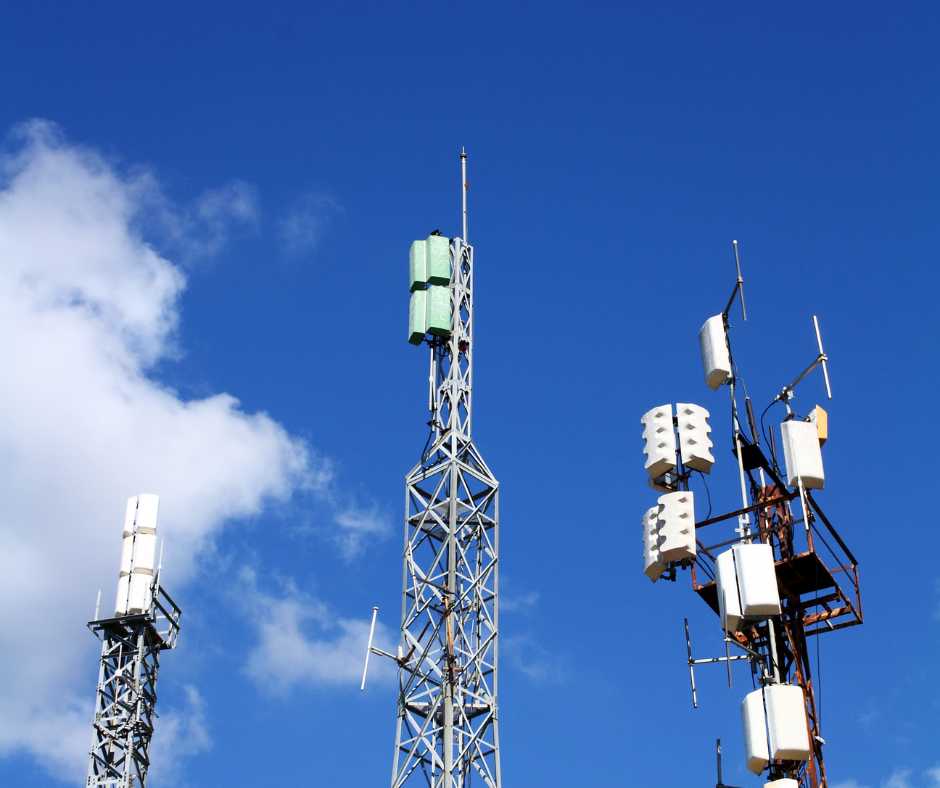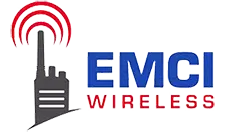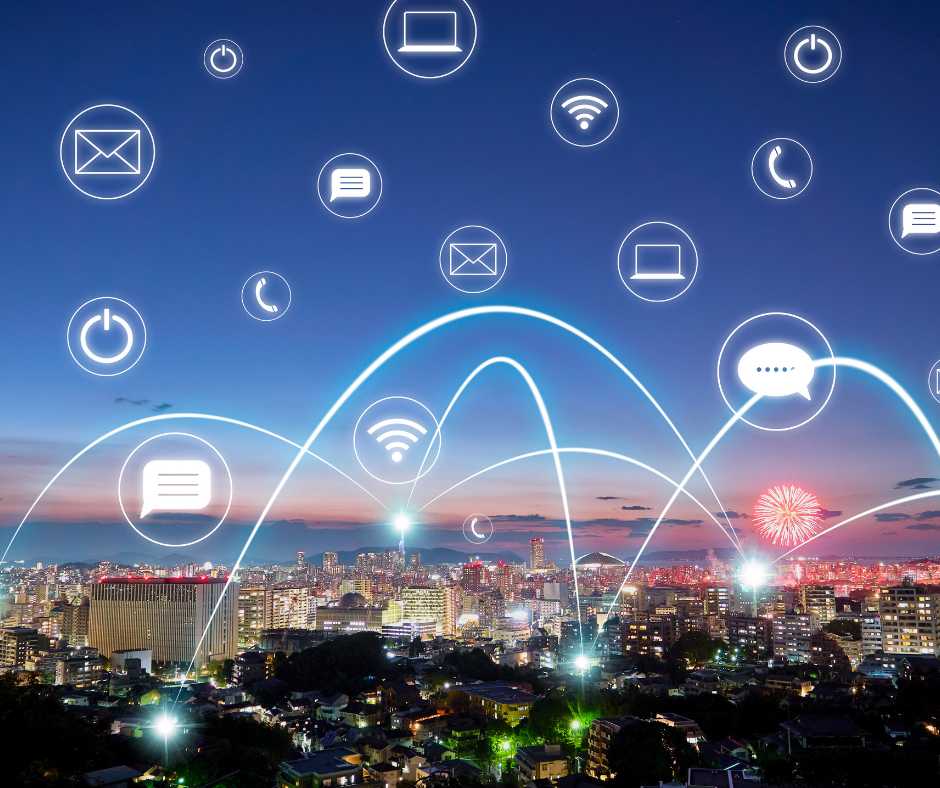The arrival of 5G has sparked a lot of excitement, and for good reason. It promises faster speeds, less delay, and better connections across more devices. Businesses everywhere are upgrading smartphones and systems to keep up.
But with all this progress, a big question remains: Do we still need two-way radios? Some might assume that cell phones have taken over. But for many industries, like public safety, construction, and healthcare, two-way radios continue to play a major role. In fact, they’re often the most reliable form of communication when it matters most.
In this article, we’ll take a closer look at how far technology has come, where 5G fits in, and why two-way radios still hold their place as a must-have communication tool.
The Evolution of Cell Phones: From 1G to 5G
Cell phones have come a long way since their early days. In the 1980s, 1G brought analog voice calls. These were large, clunky phones that were mostly used by a small number of people. Then came 2G, which introduced digital calling and text messaging. With 3G, users could finally access mobile internet and email, making smartphones a common tool in everyday life. 4G brought faster speeds that allowed for streaming video, better mobile apps, and smoother browsing.
Now, 5G is rolling out across the country, promising quicker data transfer, less lag time, and the ability to connect more devices than ever before. It’s opening doors to new possibilities in areas like smart cities, telehealth, and remote work.
Today, smartphones are everywhere. In fact, 91% of Americans are assumed to have one. They help us stay in touch, manage work, access records, and even run entire businesses from a pocket-sized device. But while smartphones are powerful, they aren’t always built for fieldwork, noisy environments, or emergency response.
This raises an important question: When the pressure is high and communication can’t wait, are cell phones really the best tool for the job? Two-way radios continue to serve a purpose that smartphones still can’t fully replace.
Two-Way Radios vs. Cell Phones: What We’ve Said Before
At EMCI Wireless, we’ve long highlighted the clear differences between two-way radios and cell phones, especially when it comes to fast, field-based communication. In a past article, we broke down why radios continue to outperform cell phones in many professional settings.
First, radios are faster. With push-to-talk, you can reach your whole team instantly. No need to dial, wait for rings, or leave voicemails. That kind of direct contact saves precious seconds, especially in high-pressure situations.
Second, radios stay dependable when cell networks are overwhelmed. During large events or emergencies, mobile networks often become clogged. Two-way radios operate on private frequencies, giving your team a dedicated line of communication.
Third, radios don’t rely on public infrastructure like cell towers or Wi-Fi. If power or network outages occur, radios keep going.
Finally, radios are built for real work. They can handle noise, drops, water, and dust. They also allow for instant group coordination, something smartphones struggle to do without added apps or services.
We’ve made the case before that two-way radios offer a strong edge, but with the arrival of 5G, it’s fair to ask: Has any of that really changed? Let’s take a closer look.
What 5G Promises, and Where It Falls Short
5G is the fifth generation of wireless cellular technology. As we shared above, tt’s designed to offer faster upload and download speeds, stronger and more consistent connections, and far greater capacity than previous networks. Compared to 4G, 5G is significantly faster and has the power to reshape how we use the internet.
New technologies that depend on reliable, high-speed connections, like self-driving vehicles, remote surgery, live streaming, and immersive gaming, are expected to benefit the most. For everyday users, 5G means quicker access to data-heavy apps and smoother experiences online.
Advantages of 5G:
- High-speed data transmission
- Supports massive IoT (Internet of Things) networks
- Lower latency for faster response times
However, even with its potential, 5G has limits, especially for industries that need dependable communication in the field.
Limitations of 5G:
- Coverage is still inconsistent, especially in rural or indoor areas
- Requires new infrastructure that’s still being built out
- Network overload still happens during major events or emergencies
- Devices tend to be more fragile and expensive than two-way radios
So while 5G opens up exciting possibilities, it doesn’t replace the need for rugged, reliable communication tools, especially when safety and speed matter most.
Where Radios Still Outperform Smartphones
Even with the rise of 5G, two-way radios continue to outperform smartphones in many high-pressure environments where time, clarity, and connection matter most. Here are a few examples:
- Natural disaster response: When hurricanes like Irma, Maria, and Harvey hit, cell towers were damaged or overloaded. Two-way radios allowed emergency teams to stay connected and coordinate efforts even when mobile networks failed.
- Stadiums and large events: Massive crowds create network congestion, making calls and texts unreliable. Radios bypass this issue, giving event staff and security teams instant, uninterrupted communication across venues.
- School lockdowns and emergency drills: In urgent situations, radios allow teachers, administrators, and safety officers to communicate immediately—without fumbling with contacts or waiting for calls to go through.
- Hospital incident response (HEICS): During internal disasters or mass casualty events, hospitals rely on HEICS to assign roles and coordinate actions. Radios are a key tool in this system, keeping teams connected when phone lines or Wi-Fi may be down.

How Radios and 5G Can Work Together
While radios and smartphones are often seen as separate tools, modern technology is bringing them closer together. Devices like Motorola WAVE radios offer the best of both worlds by combining two-way radio features with LTE and 5G connectivity. These hybrid systems allow teams to stay in touch across wider distances while still having access to instant push-to-talk capabilities.
Instead of choosing between radio or cellular, many organizations are now using both, creating a more flexible and resilient communication network.
Here are some of the benefits of hybrid communication systems:
- Use cellular networks when radio coverage isn’t available
- Fall back on two-way radio channels during emergencies or outages
- Communicate with remote teams without range limits
- Push-to-talk access across devices (radios, smartphones, tablets)
- Easier coordination between departments and outside agencies
EMCI Wireless offers Motorola solutions like WAVE OnCloud and TLK Series radios, which support this combined approach. Whether you need long-distance connectivity, push-to-talk across multiple teams, or a backup plan when networks go down, EMCI can build a system tailored to your needs.
Choosing the Right Communication System for Your Organization
Every organization has different communication needs. From healthcare and education to construction and public safety, how your team stays connected can directly affect safety, response time, and job performance. While some may benefit from smartphone apps and 5G access, others require the reliability and simplicity of two-way radios, or a combination of both.
Choosing the right system means asking the right questions about your daily operations, environment, and communication goals:
- Do you operate in areas with inconsistent cell coverage?
- Do you need group-wide communication at the push of a button?
- Are emergencies or coordination a daily reality in your industry?
- Do you need equipment that can hold up in harsh environments?
- Is cross-agency or interdepartmental communication part of your workflow?
Answering these questions can help you determine whether traditional radios, LTE-integrated devices, or a hybrid solution makes the most sense.
At EMCI Wireless, we don’t take a one-size-fits-all approach. Our team works directly with clients through on-site assessments and needs-based recommendations using Motorola’s most trusted models. Whether you’re starting from scratch or upgrading an existing setup, we’ll help you design a solution that fits your location, team size, and day-to-day demands.
5G Is Fast, But Radios Are Dependable
There’s no doubt that 5G brings exciting advancements to wireless communication. Its speed and connectivity are already changing the way we access information and run daily operations. But in high-pressure environments where clear communication isn’t just helpful, but necessary, speed alone isn’t enough.
That’s where two-way radios continue to stand strong. They offer something different: simplicity, reliability, and instant group access without relying on outside networks or fragile devices. In many industries, from hospitals to schools to emergency response, that kind of communication can make all the difference.
The smartest choice may not be either-or. Instead, many organizations are turning to blended systems that combine the wide reach of cellular networks with the dependable functionality of radios.
Whether you’re looking to expand coverage, improve coordination, or build in backup systems for high-stress moments, EMCI Wireless is here to help. We offer the tools and the guidance, to create communication setups that actually work in the field, not just on paper.
5G may be the future, but radios have always been ready. Let’s build a system that works for your team, today and tomorrow.

